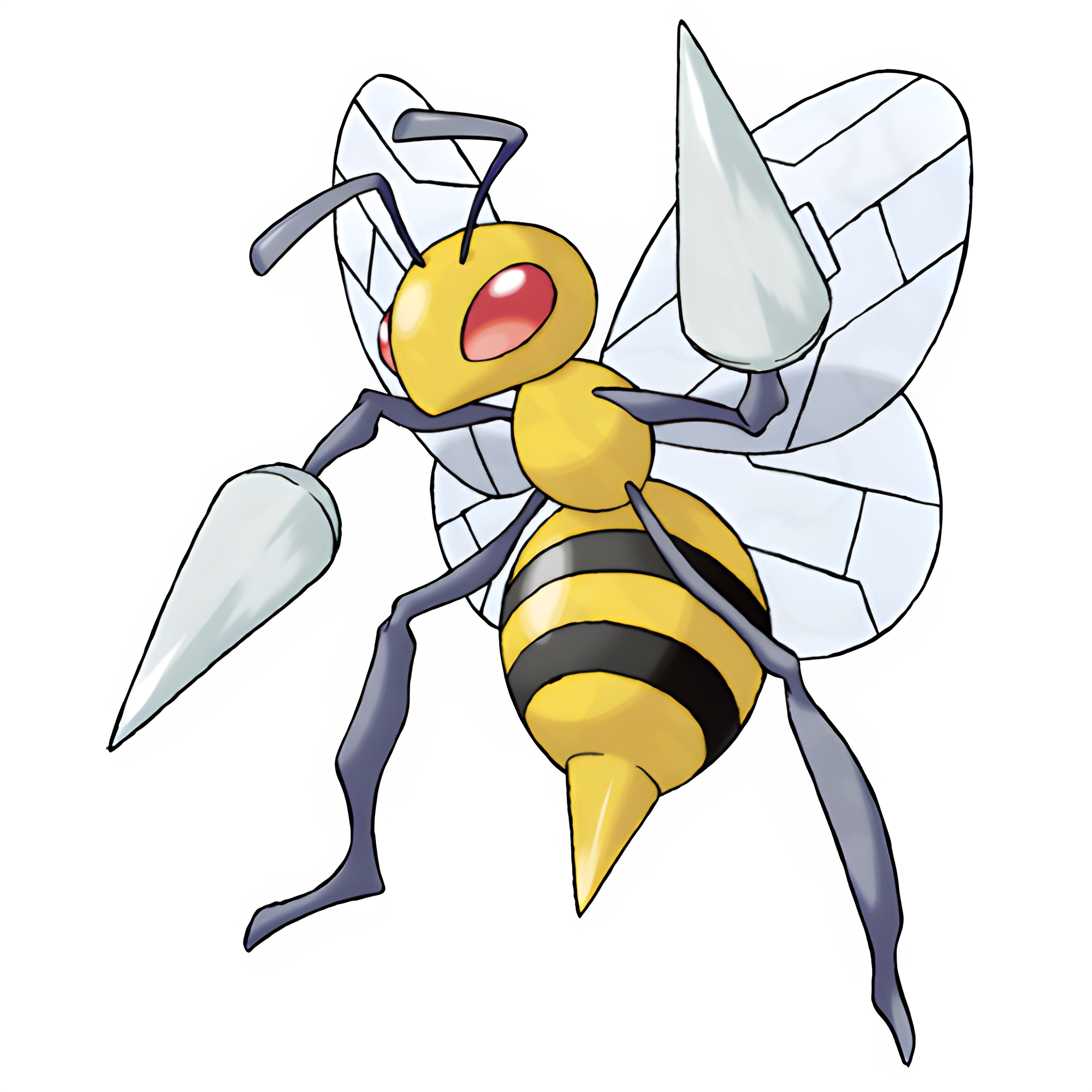Facts for Kids
Beedrill is a Bug/Poison-type Pokémon known for its speed and offensive capabilities, often characterized by its three sharp stingers.
Overview
Cultural Impact
Pokédex Entries
Competitive Usage
Behavior And Ecology
Trivia And Fun Facts
Biology And Appearance
Habitat And Distribution
Appearances In Pokémon Media

Inside this Article
Territory
Card Game
Pheromone
Pokémon
Culture
Speed
Fact
Food
Tail
Did you know?
🐝 Beedrill evolves from Kakuna starting at level 10.
⚔️ Beedrill is the only Pokémon that has the ability Adaptability.
🕷️ Beedrill can learn a variety of Poison and Bug-type moves.
🌼 It has a distinctive appearance with three sharp stingers on its forelegs.
🔍 Beedrill is known to be particularly aggressive when defending its nest.
🌎 Beedrill is part of the Kanto region in the Pokémon series.
🥇 It is classified as a Bug/Poison-type Pokémon.
🌿 Beedrill can be found in grassy areas, especially around flower fields.
🚀 Beedrill can Mega Evolve into Mega Beedrill, enhancing its speed and attack.
📈 In Pokémon GO, Beedrill is known for its high attack power in Raid battles.
Introduction
Cultural Impact
It has appeared in various TV shows, games, and even toys! Many children recognize Beedrill from the Pokémon games and TV series, making it a beloved character across generations. 🌍
Additionally, Beedrill's design and abilities have inspired artwork, cosplays, and even memes! It represents teamwork and bravery, which are important values for young fans. Many Pokémon trainers aspire to catch and evolve Beedrill, making it a staple in the Pokémon franchise!
Pokédex Entries
Competitive Usage
Behavior And Ecology
Trivia And Fun Facts
When it Mega Evolves, its power and speed increase significantly, and it's known to have the highest Attack stat of any Bug-type Pokémon! Beedrill can also learn moves like Toxic Spikes, which can poison opponents. In Pokémon Sword and Shield, Beedrill is part of the Galar region's Wild Area, where trainers can catch this buzzing Pokémon easily! 🐝
Another fun fact is that Beedrill was initially designed based on wasps, making it quite the fierce Pollinator!
Biology And Appearance
Habitat And Distribution
Appearances In Pokémon Media
It has been featured in classic animated series like Pokémon: Indigo League and Pokémon Journeys. Beedrill also shows up in Pokémon Trading Card Game, where it is a popular choice in battle decks. Additionally, there are Beedrill plush toys and other merchandise that kids love! 🎁
In the Pokémon GO game, players can catch Beedrill in local parks, and it even evolves from Kakuna using Candy. Many fans enjoy drawing and creating art of this iconic Pokémon!

